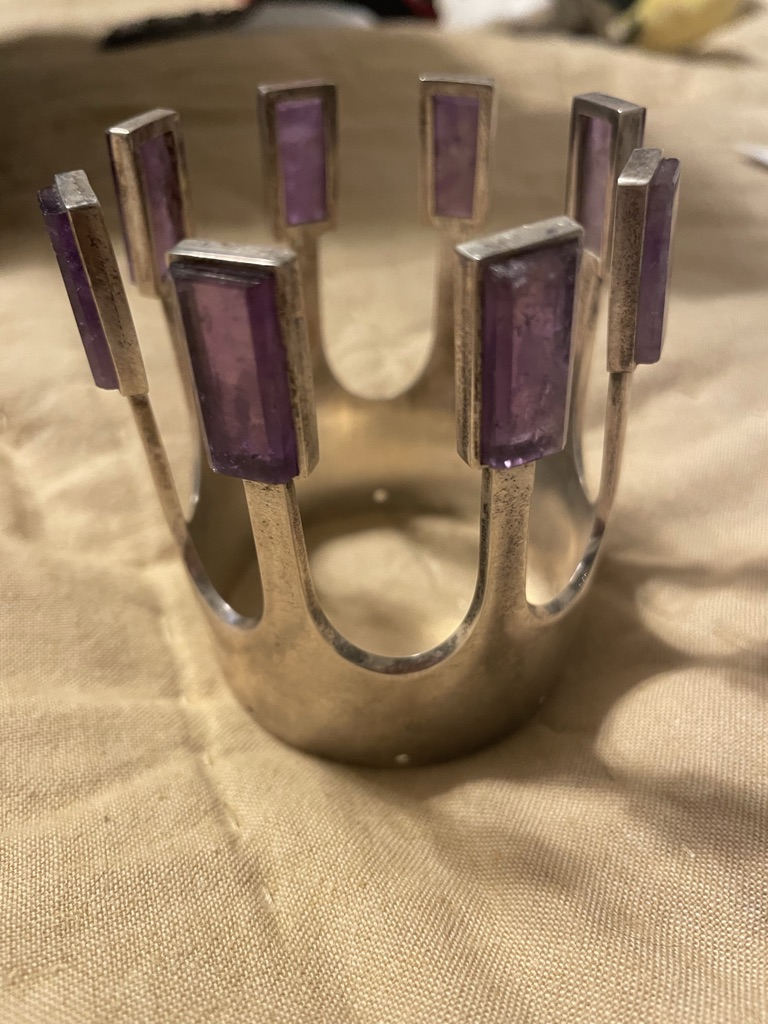J. has always had a fascination with the supernatural. From her strong belief in fairies, forest and water spirits, and ghosts growing up, she held onto her belief in the paranormal well into her teenage years.
“The summer after ninth grade, I was gifted a ouija board from one of my mom’s friends. I had always loved horror movies and anything that had to do with ghosts or spirits–people on ‘the other side.’ That summer, I went to Palm Springs for a family trip. That was the first time I used the ouija board. Me and my friend who had come with us sat down to try it out one night, and we contacted a spirit named Dino. He said he was an older man, around his 50’s–he was a nice spirit. He told us that him and his brother had grown up near the area we were staying, and that he remained in that area because he was waiting for his brother to return.”
That wasn’t the only time that J. used that Ouija board. J. was my best friend in high school, and after she came back from that trip and we started sophomore year together, the Ouija board was the main event of every sleepover, birthday party, and even casual after school hang out sessions. The first time we pulled it out in Portland, Dino visited again. He had followed J. home from Palm Springs, saying she was the first person he had been able to connect with from across the grave.
Not all the spirits we encountered were nice like Dino, though.
“I remember we were both here the night of my 16th birthday party. Remember? That’s when all the really crazy stuff happened and we decided to stop using the ouija board.”
I do remember that night. This is how J. gave a run down of the events:
“All of the girls had come over to celebrate my birthday and we couldn’t wait to pull out the ouija board. We were sitting in my living room downstairs, all gathered in a circle on the floor. You were sitting out because you always refused to touch the board–so lame.” She laughs. “Anyways, we started playing and the first spirit we contacted was a 10 year old girl named Rose. You were freaked out because that was your middle name and something only people in your family called you. It started to get scary because she told us that she was outside the door and needed us to let her in. All of us got super scared and I think it was Avery who got up and ran to lock it. After that, she told us she had a message but all of us had to power off our phones so that we couldn’t share her message. Then, she told us that one of our friends from school was in danger–that he was going to be in a car crash that night. All of a sudden, we all panicked, saying we needed to use out phones to call and check on him. She let you, actually, turn on your phone and text [L] to ask if he was with that friend and to make sure he was okay.”
“After that, she started counting down from 10, which we all learned is really dangerous and you’re not supposed to let them reach zero or they could enter the house or even one of our bodies and like, possess us. We had to quickly say goodbye–that’s really important, too. If you leave a spirit without saying goodbye they get really mad and some bad things can happen.”
After the first attempt at the ouija board that night, and our crazy experience with Rose, J. wanted to try again, but this time in her spooky attic. All of her late great grandmother’s old clothes, furniture, and paintings were up, and she thought it would heighten our connection to something across the grave. When we went up there, we came into contact with Dino again, but he soon revealed that he was actually an evil spirit named Zozo. We had heard about Zozo before, and he was supposedly more evil than the devil himself. Long story short, he threatened to break our friend E.’s fingers if I didn’t join in and put my hands on the planchette. After refusing, he wouldn’t let us say goodbye, and we all got really scared before eventually forcing him to leave.
“That was the last night we ever did Ouija. I still carry the board in my car, but all of us are too freaked out to try again.”
For more information about the infamous, malevolent spirit, Zozo, see here: https://www.bustle.com/life/what-is-zozo-read-this-before-you-ever-touch-a-ouija-board-again-12197819
Ouija boards can be seen as a kind of contagious folk belief, because one has to come into contact with the board and the planchette to be able to contact spirits.

